
After Apple killed Dark Sky on January 1, many fans found themselves lamenting the loss of the groundbreaking weather app that offered hyperlocal forecasts. Luckily, you can re-create Dark Sky’s main features using a competing app called Carrot Weather. Alternatively, you can quickly tweak Apple’s built-in Weather app so it acts more like Dark Sky.
Let me show you how to enjoy Dark Sky’s beautiful user interface, and its uncannily accurate weather alerts, using other weather apps.
Why people loved Dark Sky weather app
Dark Sky won awards and became popular among iPhone and iPad users due to its straightforward user interface and its extremely precise data. But then Apple bought Dark Sky in 2020, issuing the Android version of the weather app a death sentence. Then Apple began rolling some of Dark Sky’s features into its own Weather app.
After incorporating stuff like minute-by-minute rain warnings into its stock Weather app, Apple pulled the plug on Dark Sky on December 31, 2022. Apple’s updated app is definitely better than before. However, if you want to see your weather laid out exactly how you’re used to, you can replace Dark Sky with Carrot Weather.
Replace Dark Sky with Carrot Weather
Dark Sky had a very clever way of visually representing how weather conditions would change throughout the day. Front and center, a tall graph showed the predicted rise and fall of the temperature in the next 24 hours, with a big stripe on the side that showed the color of the sky. Scroll down, and you saw a similar layout with info about the upcoming week.
Snarky weather app Carrot Weather, available for free on the App Store, can mimic the smart look of Dark Sky. But you’ll pay for the privilege. It will cost $9.99 monthly, or $39.99 annually, to configure it as shown below. (You can get a seven-day free trial to see how you like it first.)
To get started, download Carrot Weather from the App Store.
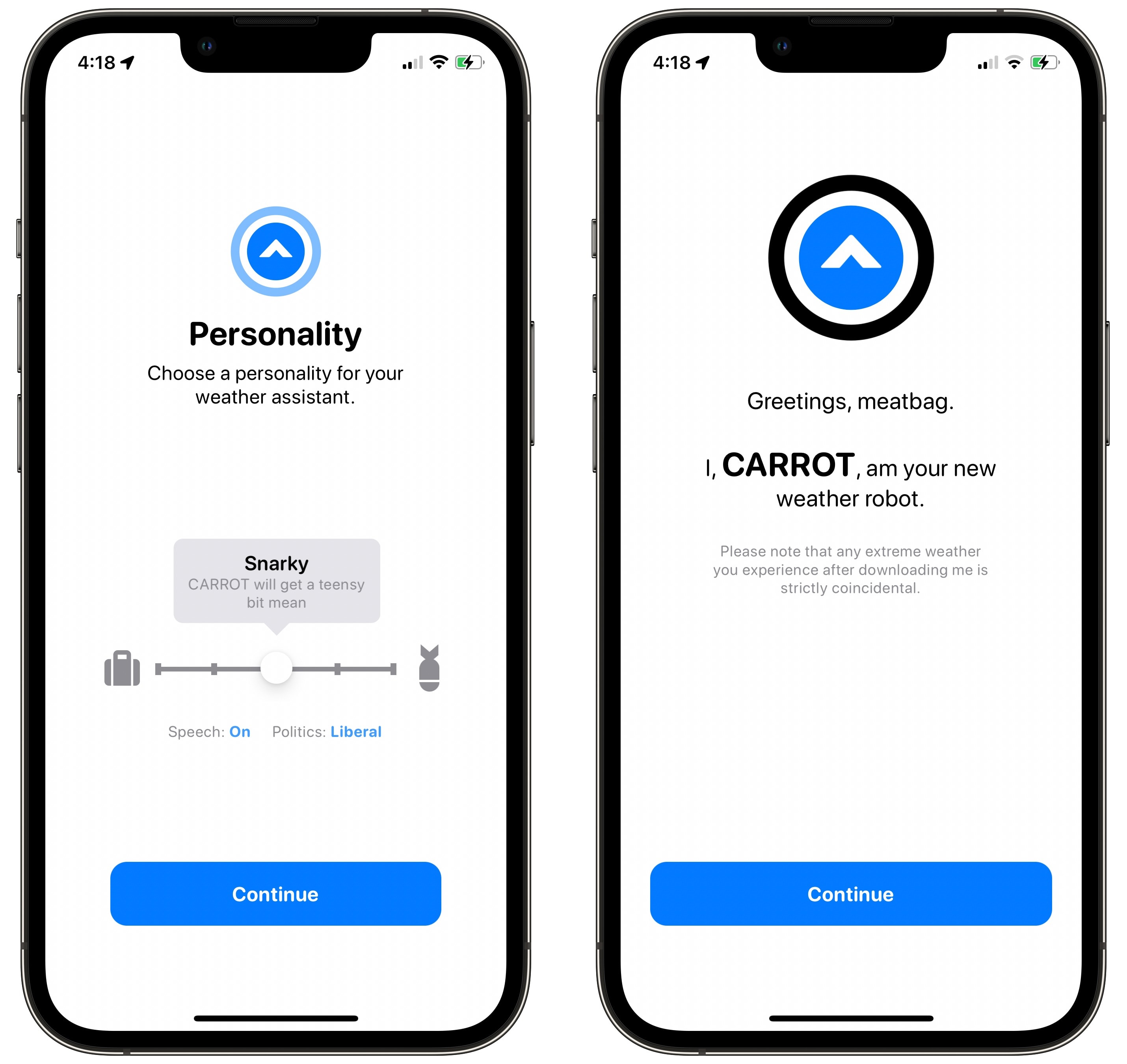
Screenshot: D. Griffin Jones/Cult of Mac
Carrot Weather is famous for its sarcastic remarks about your weather conditions — you can program its personality during setup. Pick your level of snark and, if relevant, your political and profanity preferences.
If you want to use local weather data, you’ll need to give Carrot Weather access to your location. Tap Don’t Allow if you just want to manually pick a few cities important to you. (I should mention that Carrot Weather’s privacy report card in the App Store states that developer Grailr does not link your location data to your identity.)
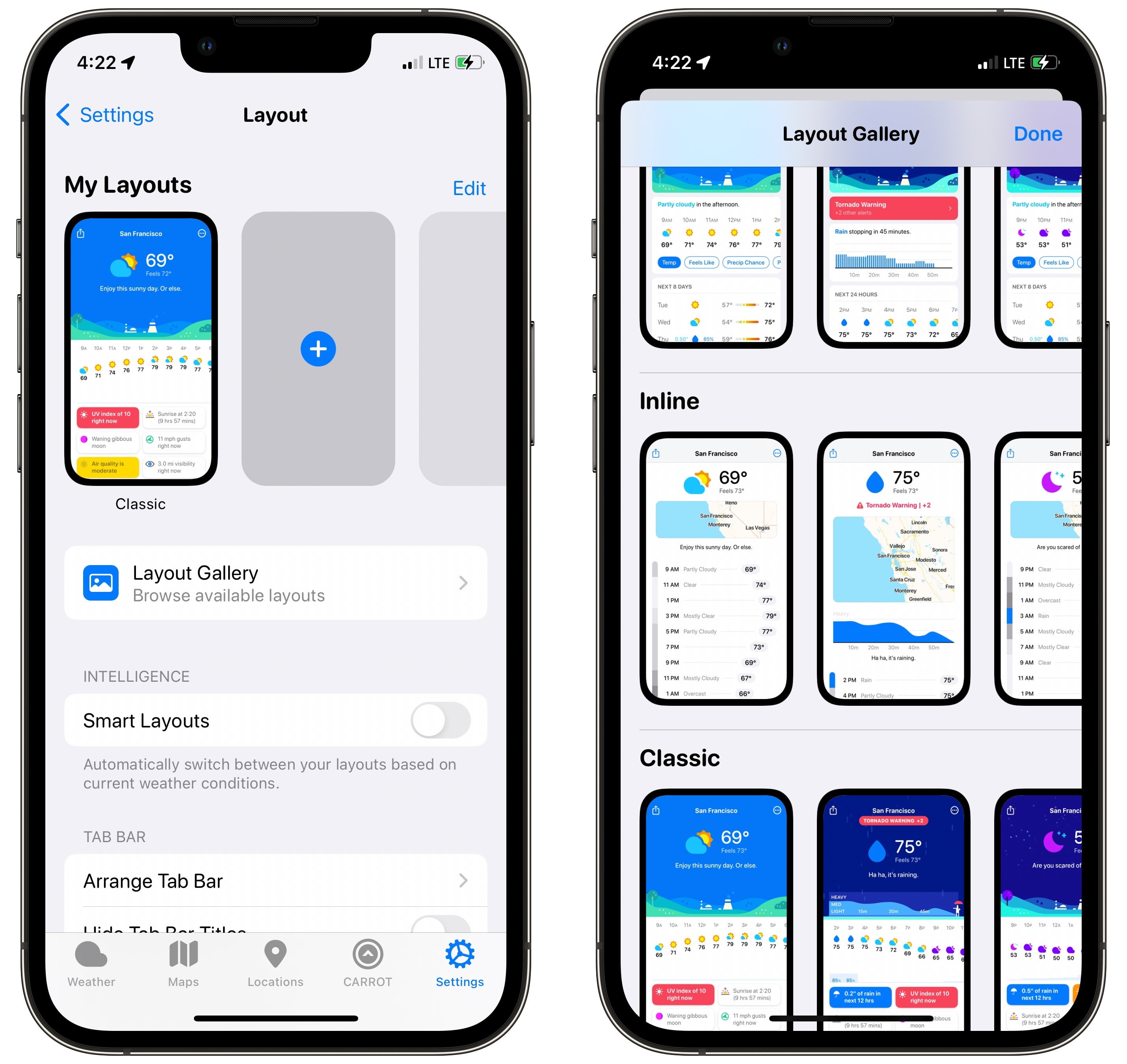
Screenshot: D. Griffin Jones/Cult of Mac
Next, go to Settings > Layout > Layout Gallery and pick from several Inline layouts. All of these are, shall we say, inspired by the late Dark Sky weather app. Give it a name (like DarkCarrot) and tap OK.
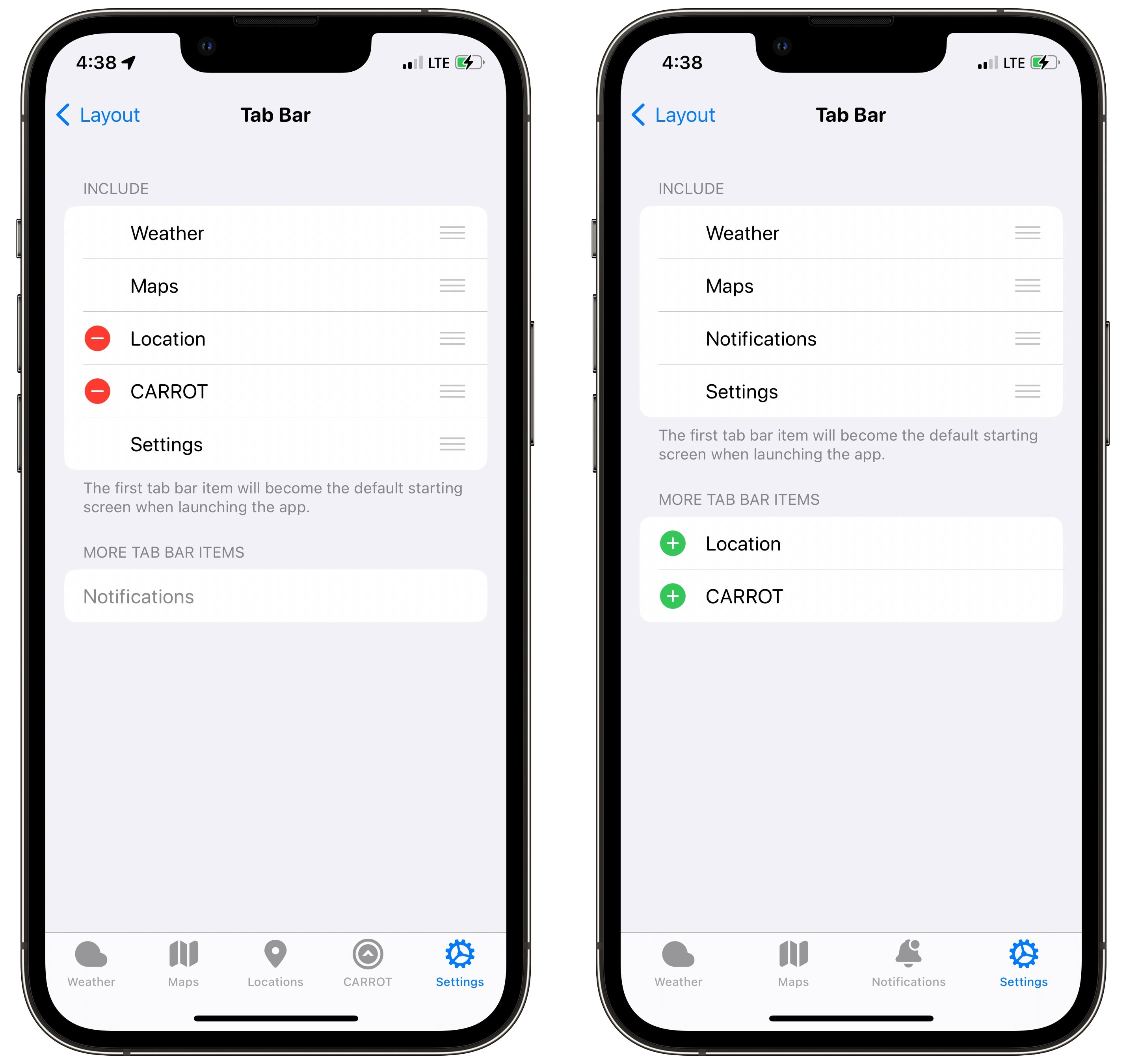
Screenshot: D. Griffin Jones/Cult of Mac
Then, go back to Settings > Layout > Arrange Tab Bar. Tap − and Delete to remove Location, tap + to add the Notifications tab, delete the Carrot tab and drag Settings down to the bottom. This will replicate the tab bar arrangement of Dark Sky.
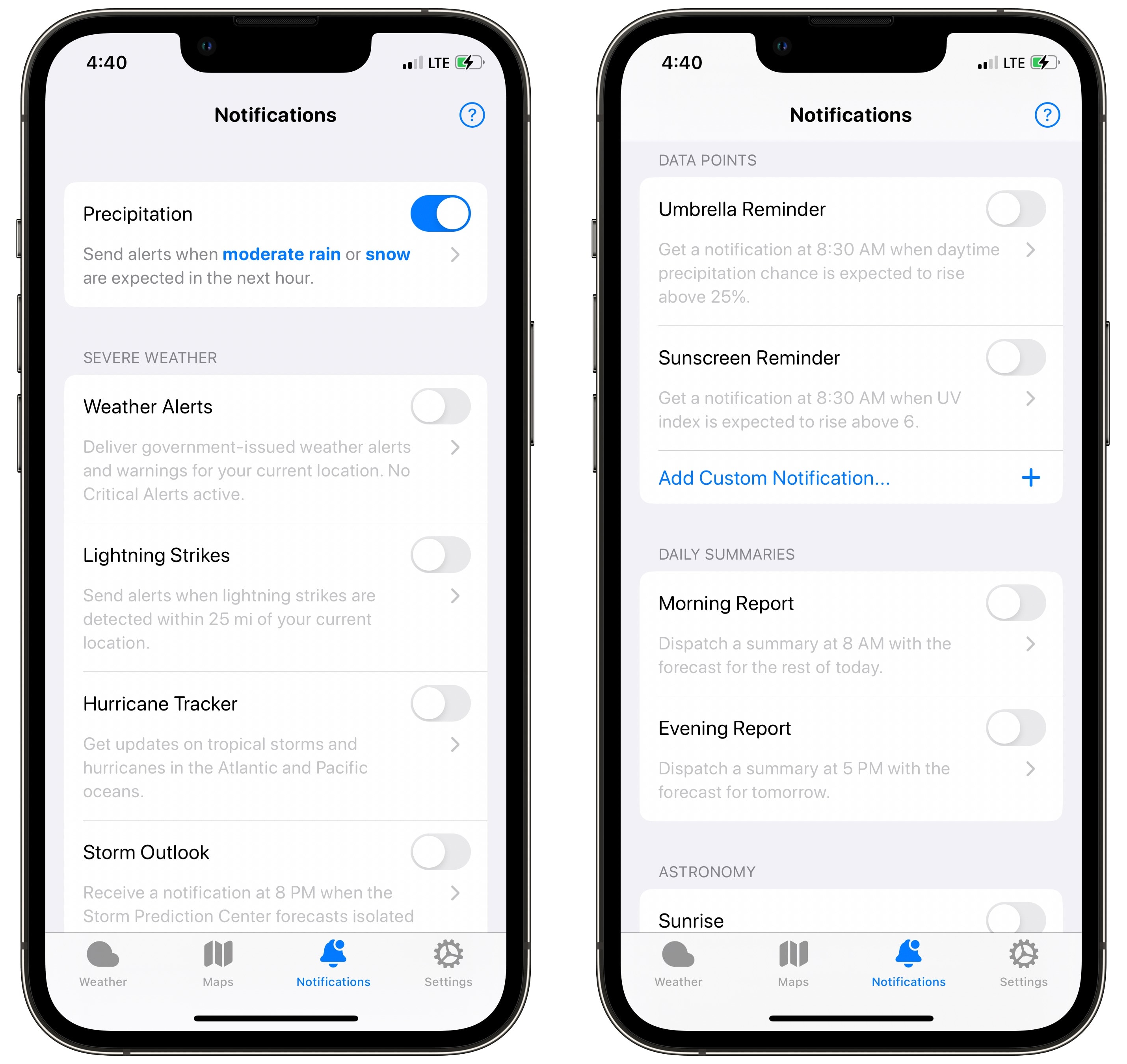
Screenshot: D. Griffin Jones/Cult of Mac
While you’re at it, you might want to configure those notifications. While the stock Apple Weather app only offers a few switches you can turn on or off completely, with Carrot Weather, you can get exactly what you want. You’ll need to accept a bunch of pop-ups to allow notifications and background location tracking as you make your desired changes.
I turned on Precipitation, but only on the Moderate threshold. (I’m annoyed when I get buzzed from Apple Weather because it’s simply sprinkling outside. I live in Ohio — that’s about every day.)
If you live in Tornado Alley or a hurricane hotspot, you might want to turn on severe weather alerts. You also can choose to receive smart reminders to take an umbrella or put on sunscreen, optional morning and evening reports on upcoming conditions, and alerts for the sunset and sunrise.
Or, stick it out in Apple Weather
If subscriptions aren’t your style, you can kick back with Apple’s Weather app, which comes free on your device (now including the Mac and the iPad!). As I said earlier, Dark Sky’s underlying technology now powers the Weather app’s forecast and precipitation notifications. If that’s all you cared about, let’s make sure you have those notifications enabled.
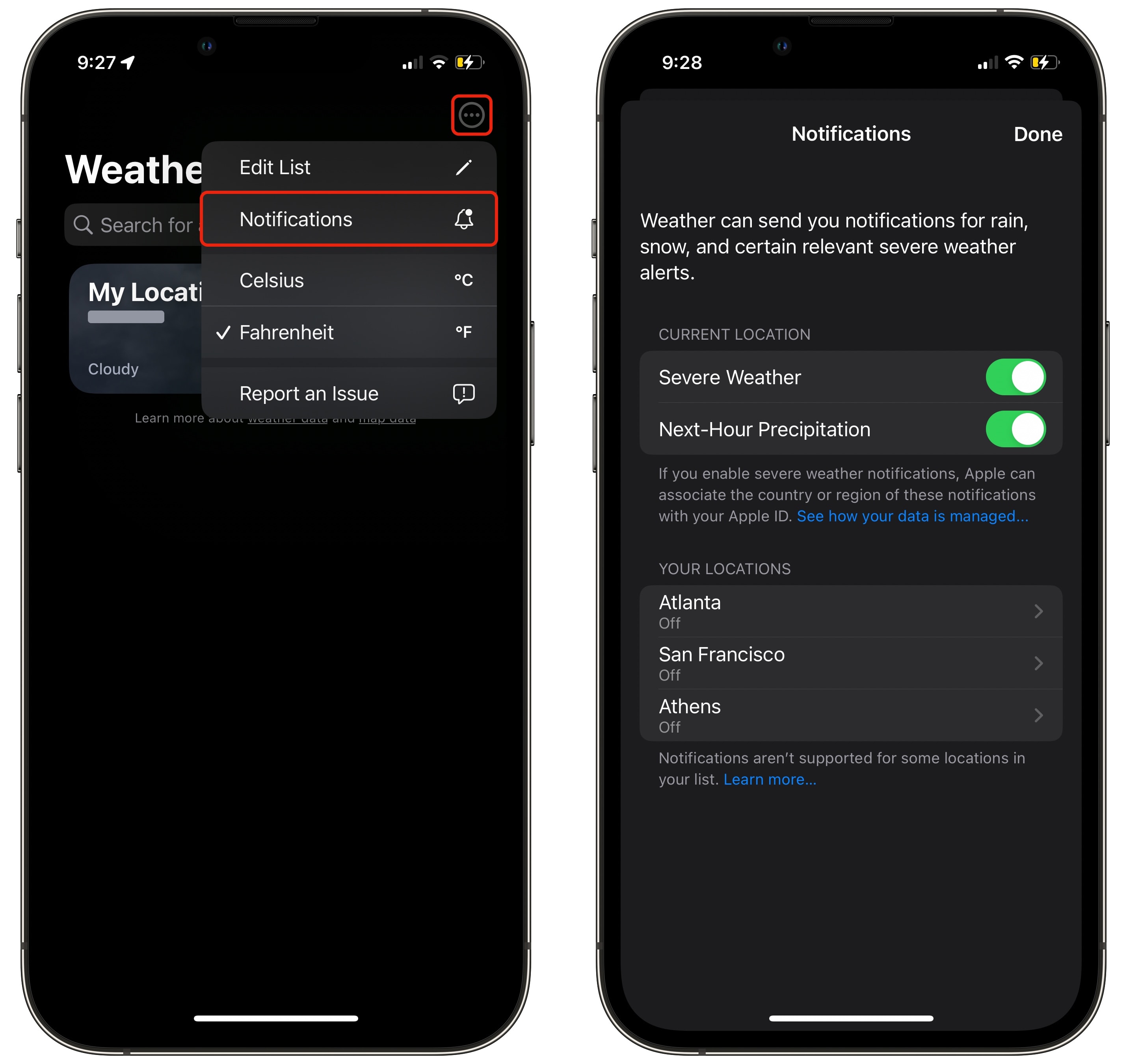
Screenshot: D. Griffin Jones/Cult of Mac
Go to Weather, tap the menu in the bottom-right, tap the ⋯ in the top-right and tap Notifications. Make sure you have Severe Weather and Next-Hour Precipitation enabled for any location you want alerts for. Unfortunately, you can’t get any more granular than that.
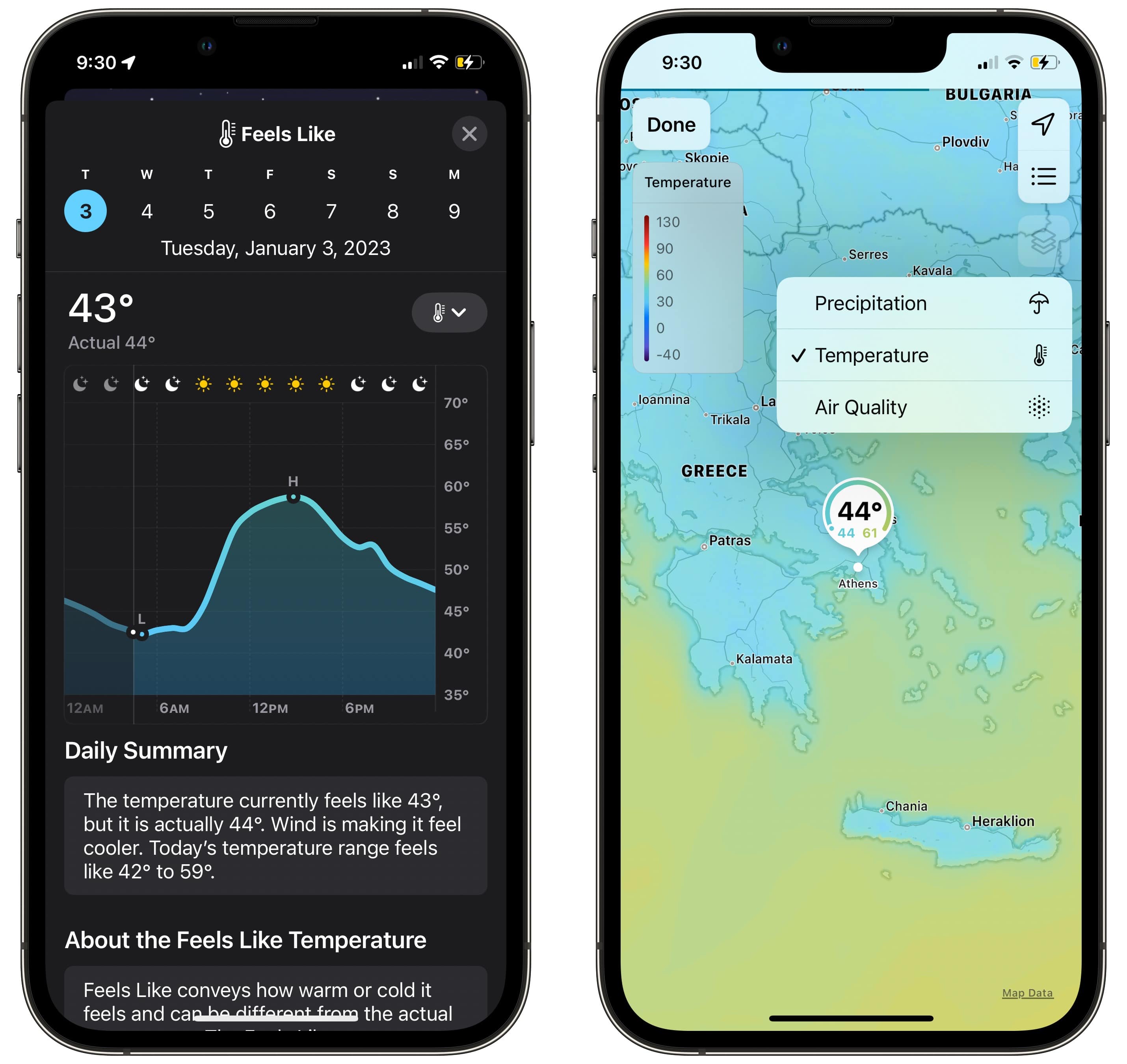
Screenshot: D. Griffin Jones/Cult of Mac
You can still get detailed graphs and radar in Apple Weather, though. Just tap on any of the widgets in the list to see a pop-up window with more information. Tapping on the radar, you can switch between a temperature heat map, a precipitation map and an air quality map using the layer icon at the top-right. Zoom out on the map to see all the saved cities you have added.
Conclusion: Dark Sky alternatives
I never used Carrot Weather previously, but I can definitely see the appeal after a day of poking around in it. All of its coolest features, though, require a rather expensive paid subscription.
Apple’s free Weather app carries over some of Dark Sky’s key features, but doesn’t offer options to tweak layouts and alerts like you can with Carrot Weather. Ultimately, it’s your call on how much you miss Dark Sky.






